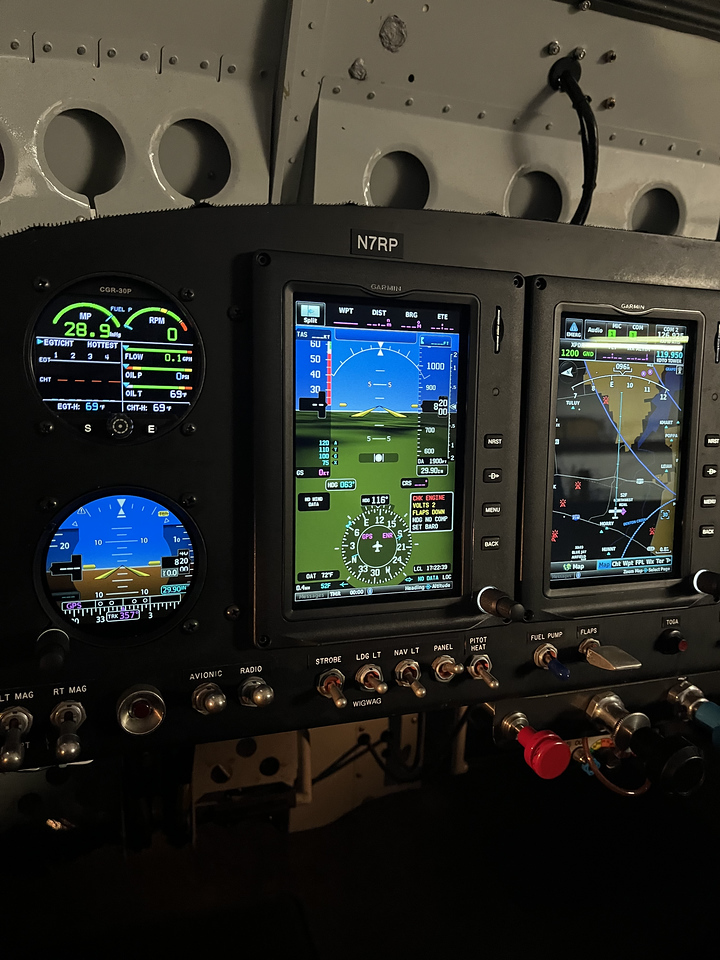Dad's RV-10
Well Known Member
I've got two non-touch 7" screens (GDU-370/375). At some point down the road, I'll likely upgrade to Touch.
Weighing the pros and cons of replacing the two screens with two 7" Touch screens vs. a single 10.6" Touch screen.
The benefit of keeping two 7" screens appears to be additional serial ports and screen redundancy. The benefit of a single 10.6" screen appears to be greater overall display real estate.
If choosing to consolidate to a single 10.6" screen, what's the likelihood of an actual display failure? Has anyone here had a Touch screen fail in flight?
There's a Dynon D6 in the plane that would likely be replaced with a G5 when upgrading to Touch.
Weighing the pros and cons of replacing the two screens with two 7" Touch screens vs. a single 10.6" Touch screen.
The benefit of keeping two 7" screens appears to be additional serial ports and screen redundancy. The benefit of a single 10.6" screen appears to be greater overall display real estate.
If choosing to consolidate to a single 10.6" screen, what's the likelihood of an actual display failure? Has anyone here had a Touch screen fail in flight?
There's a Dynon D6 in the plane that would likely be replaced with a G5 when upgrading to Touch.






